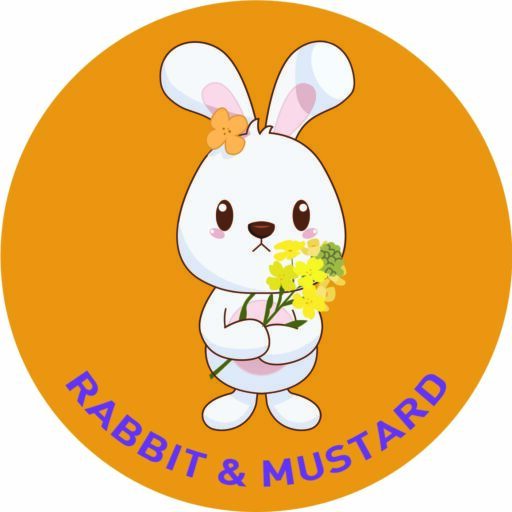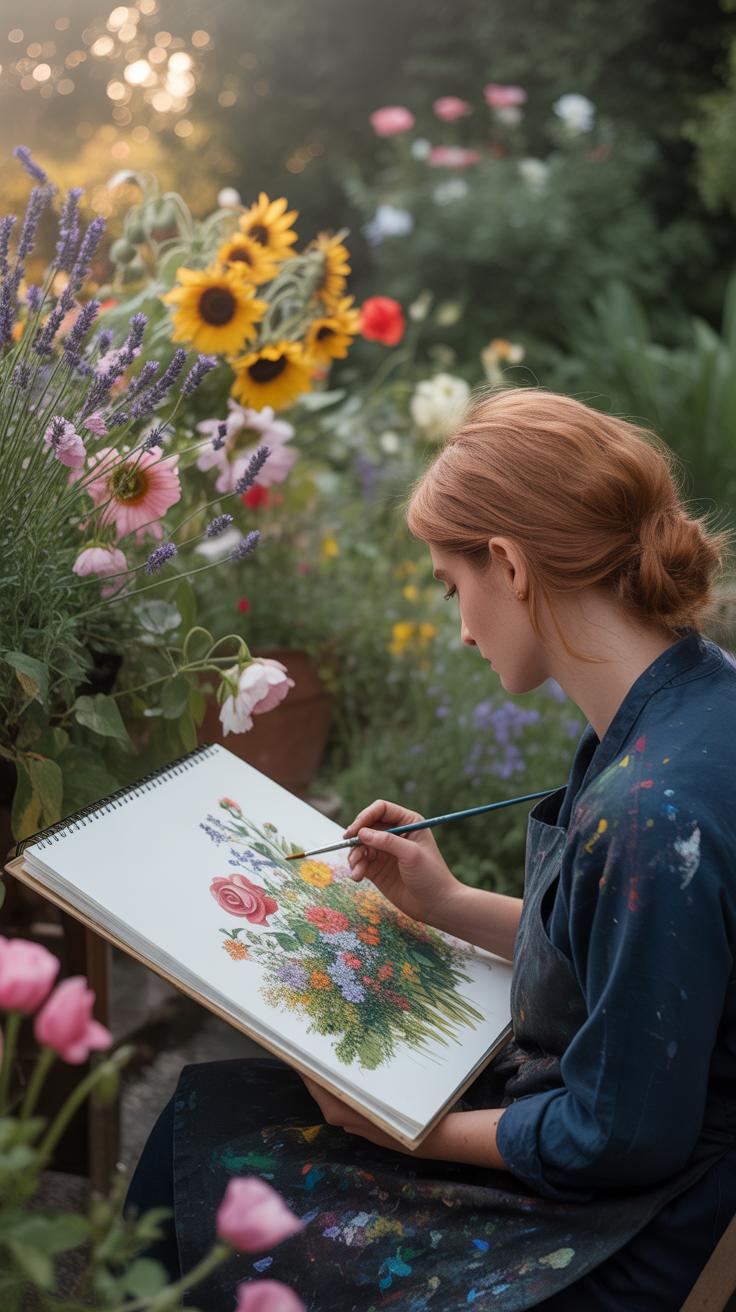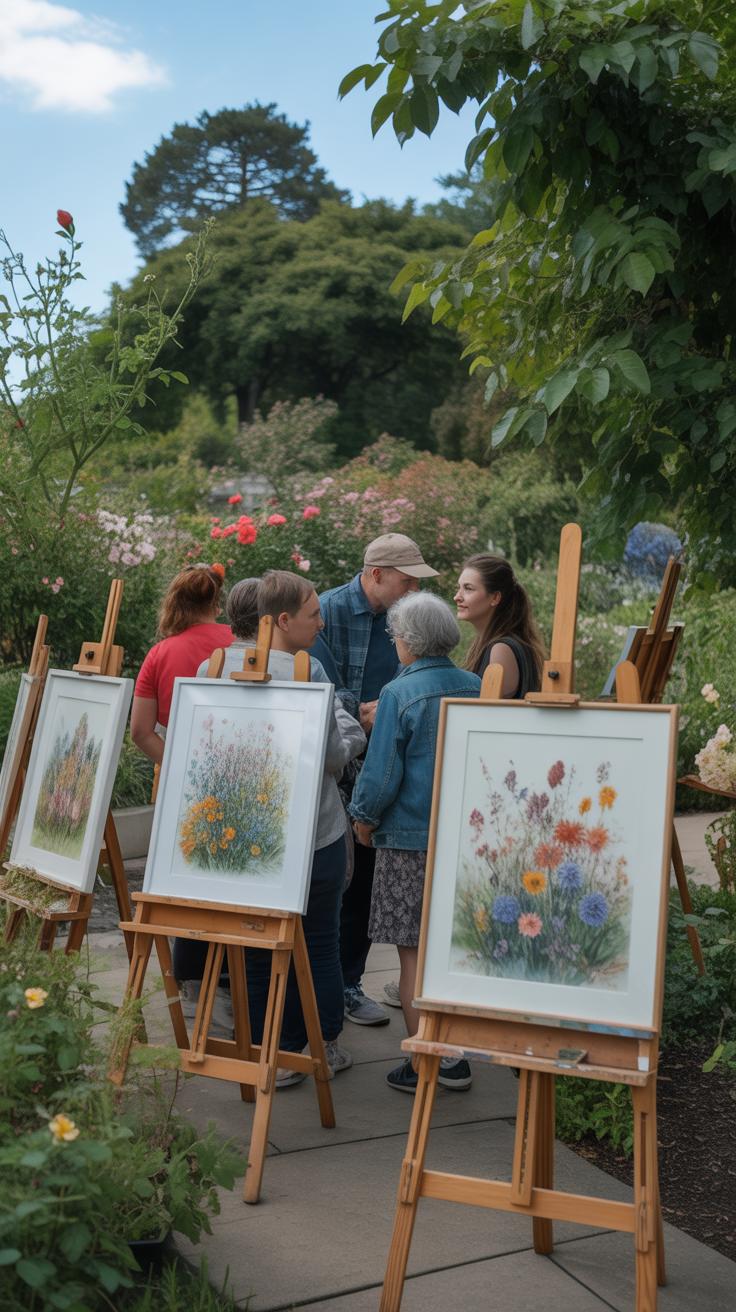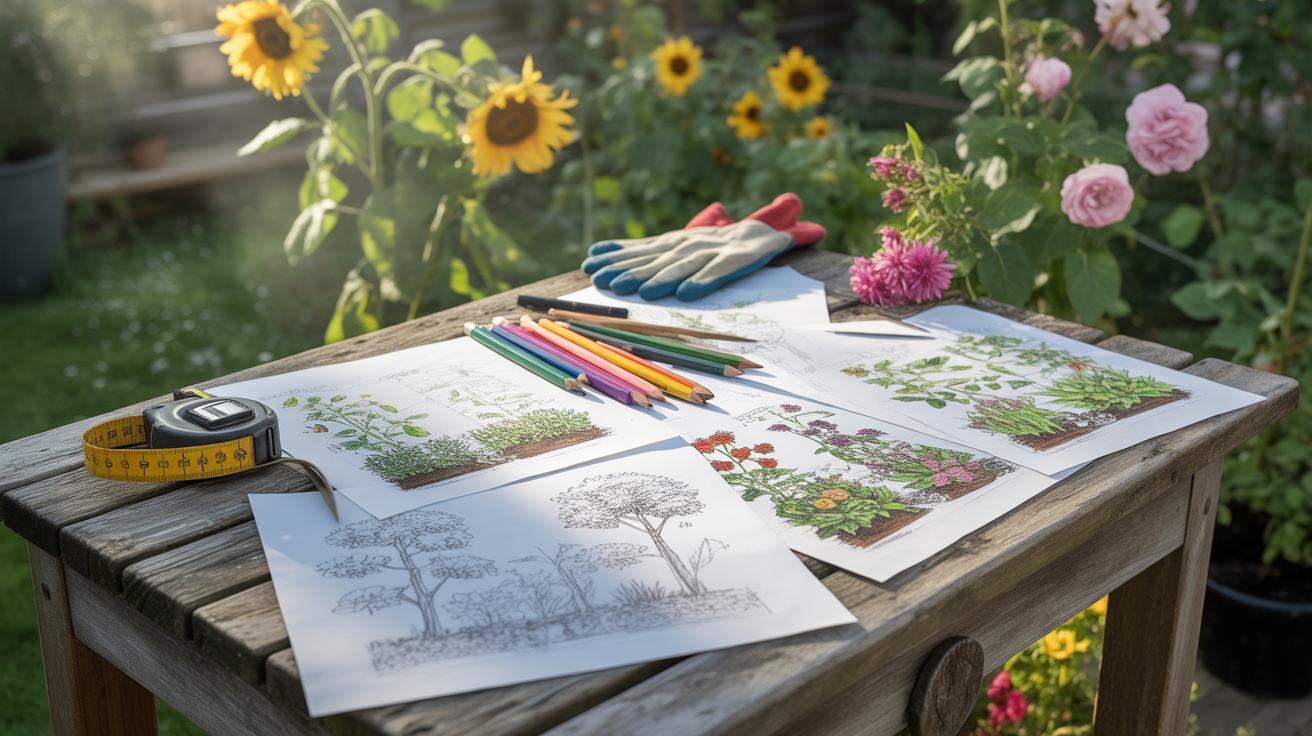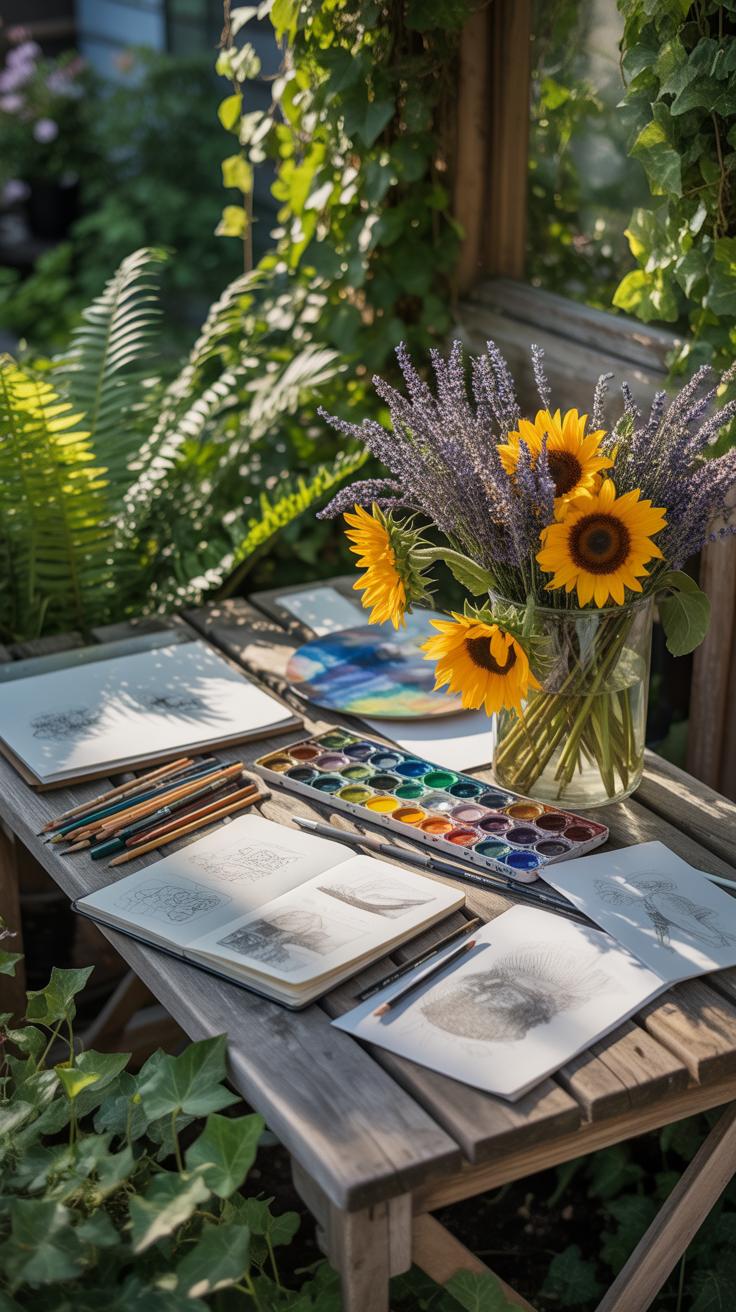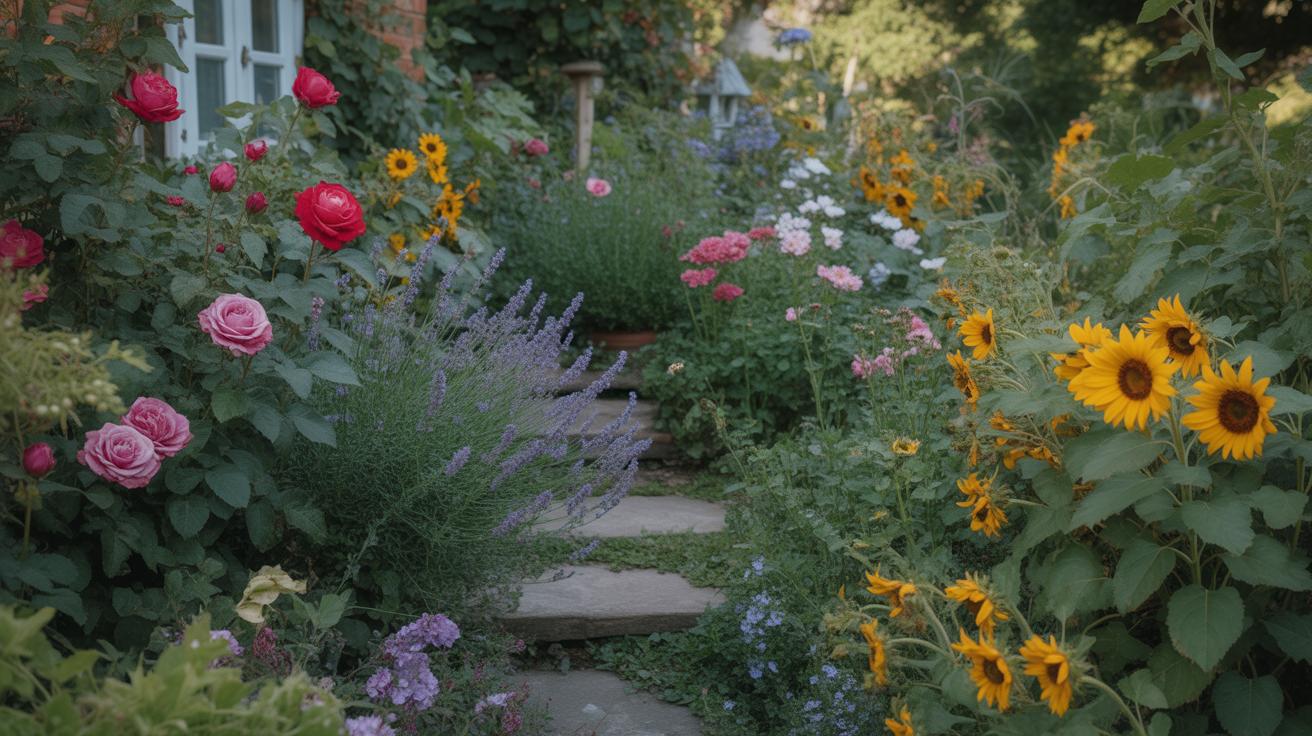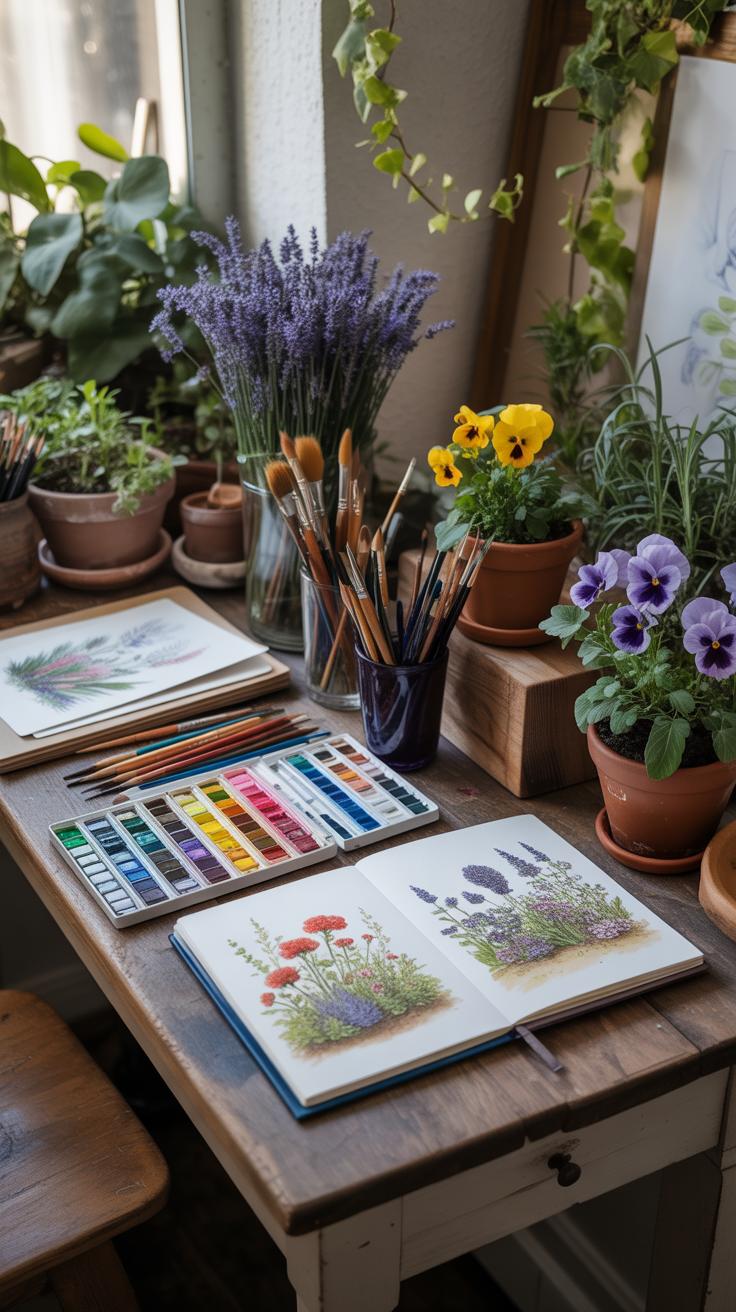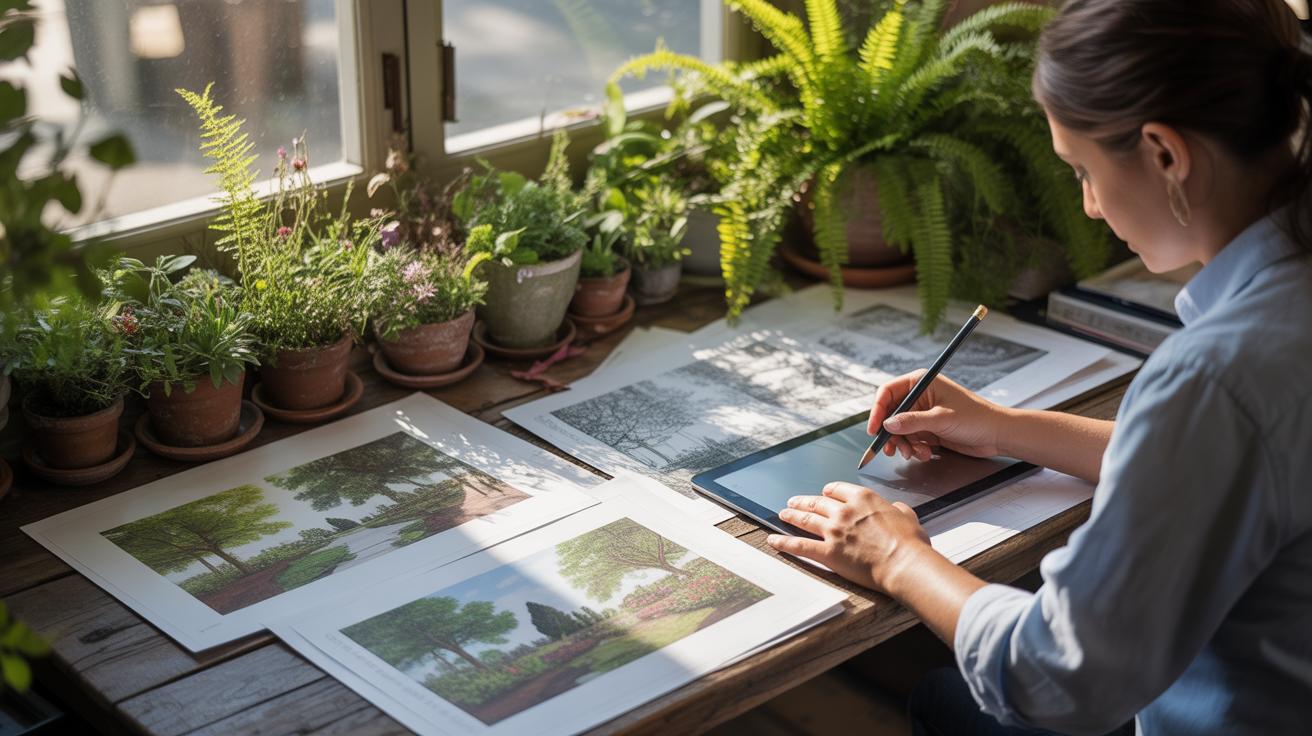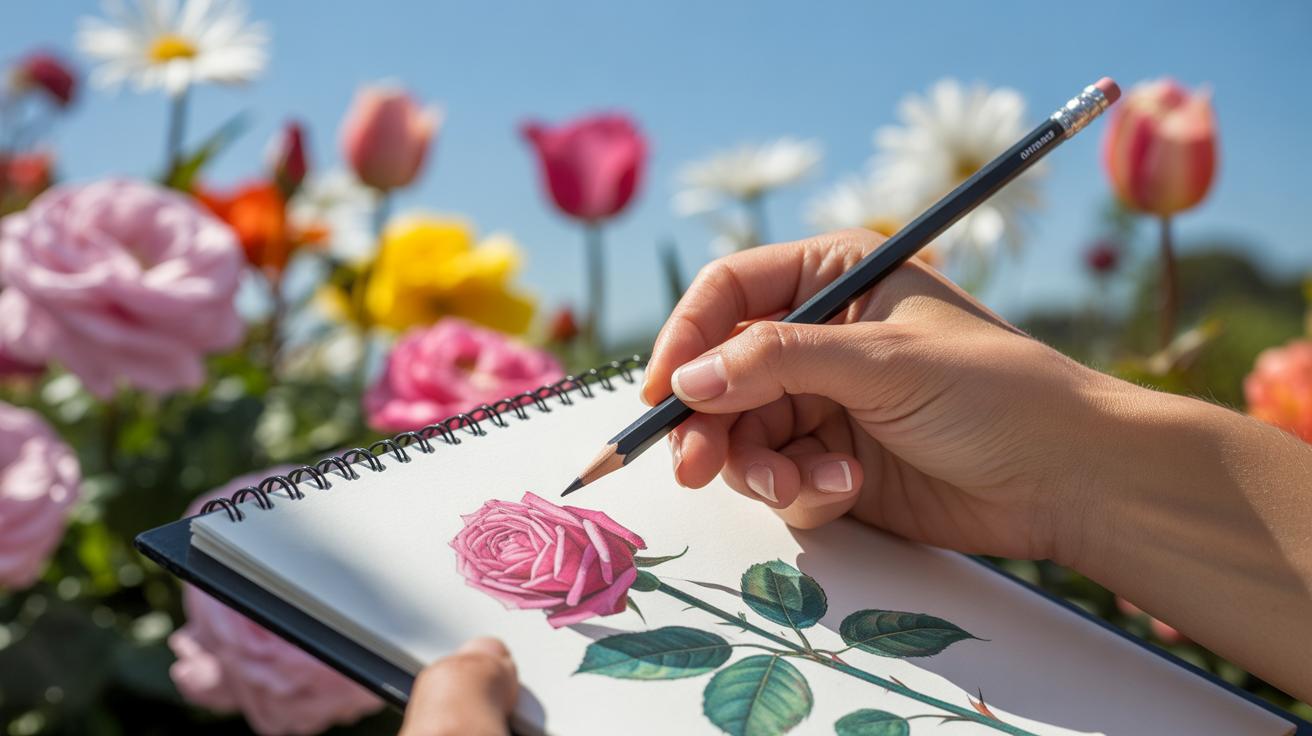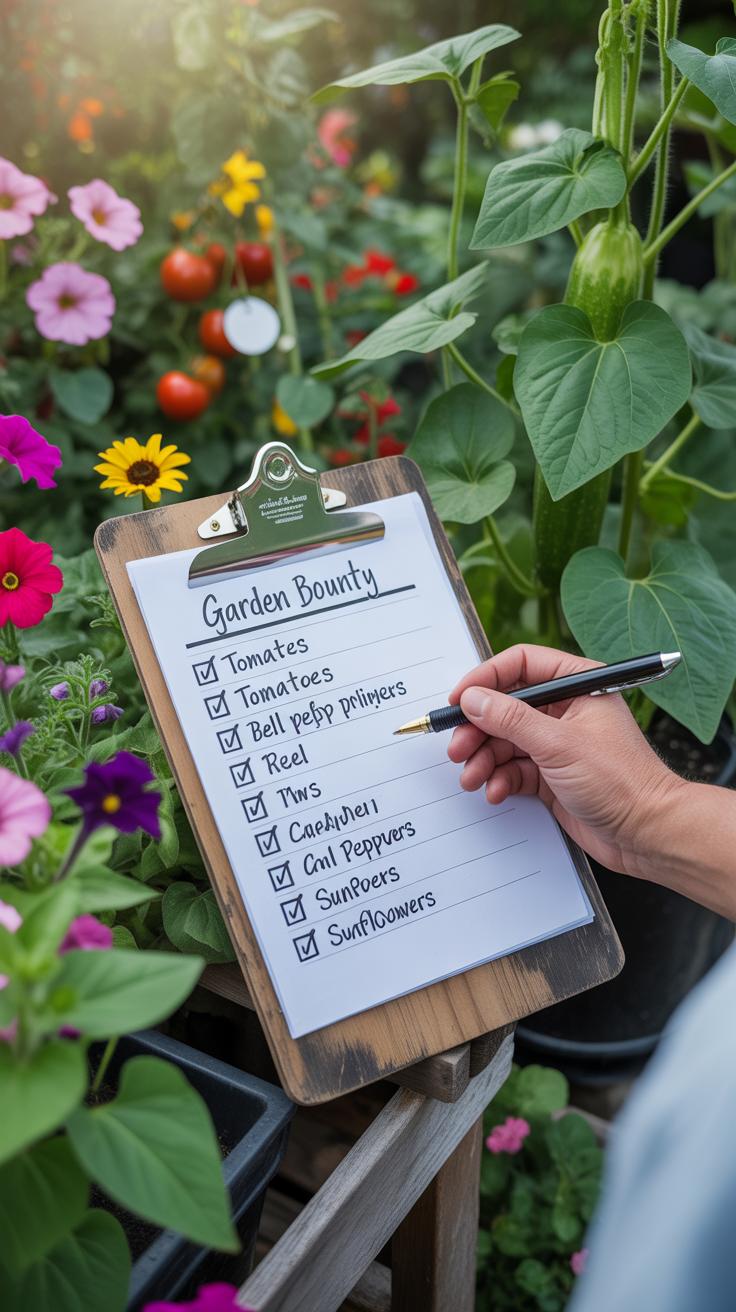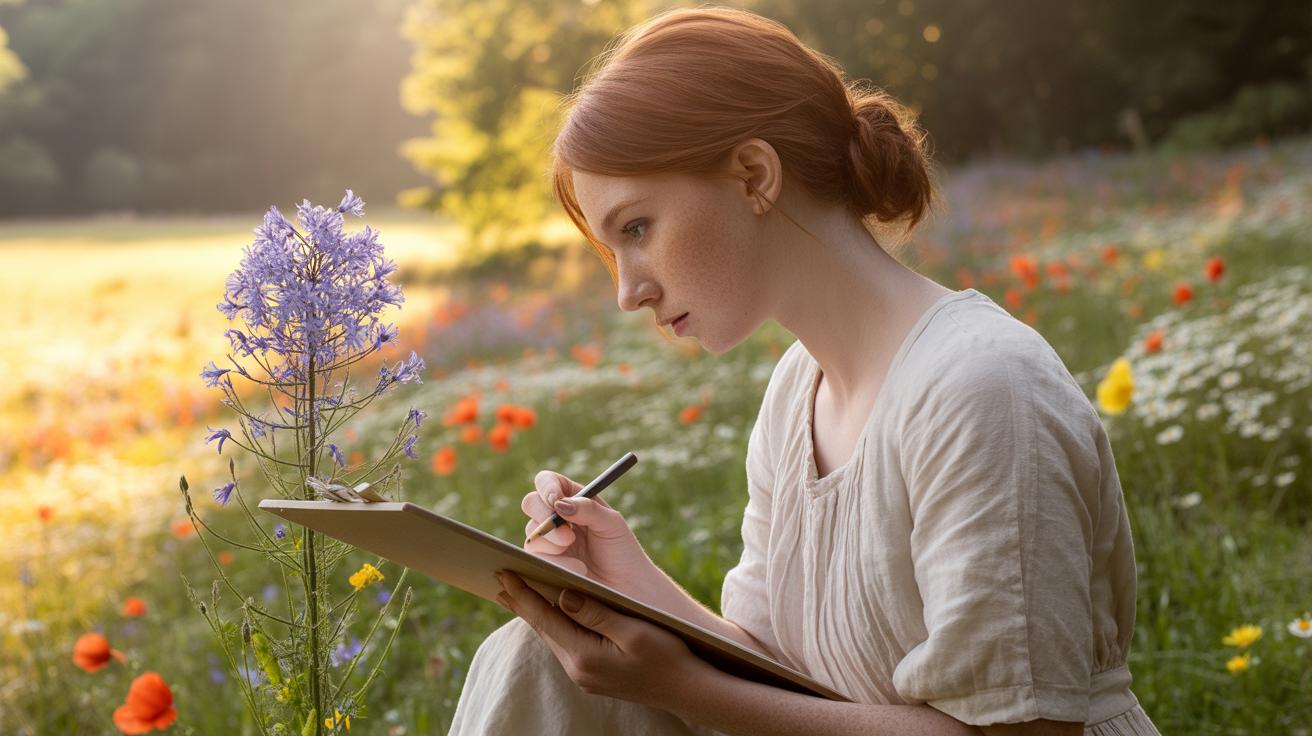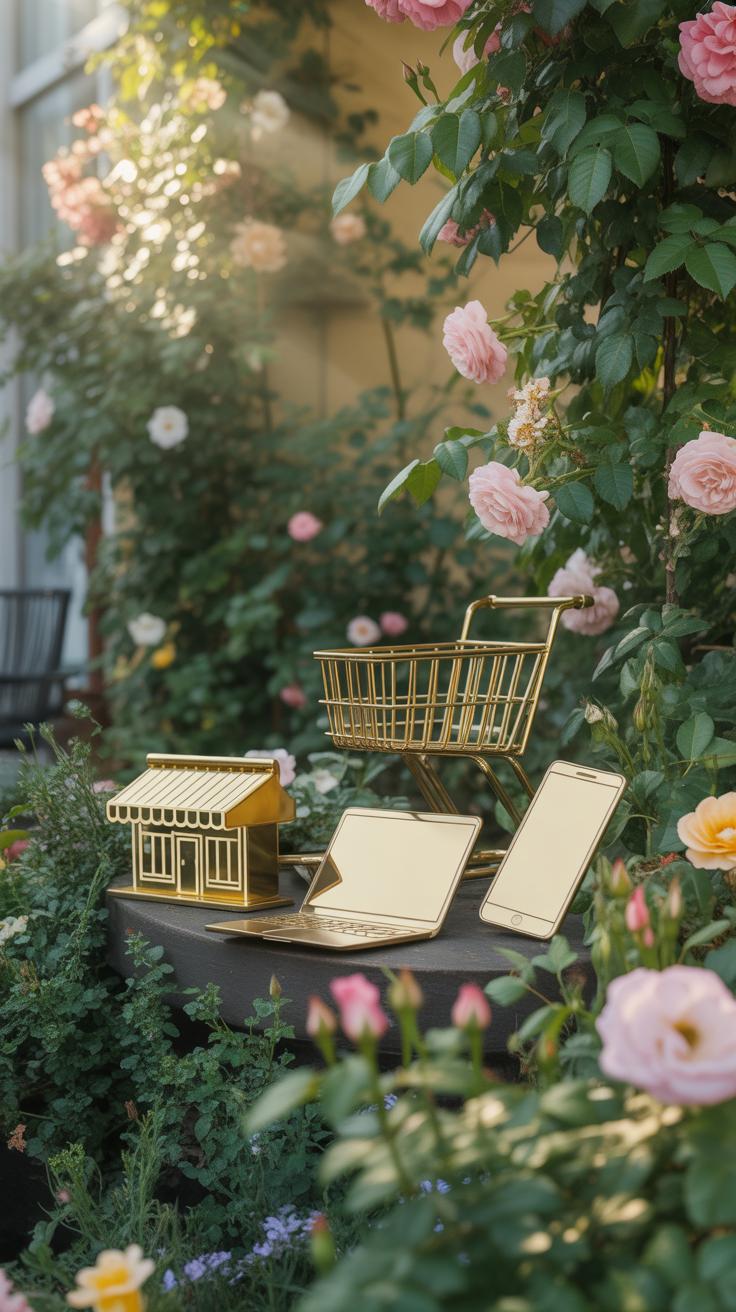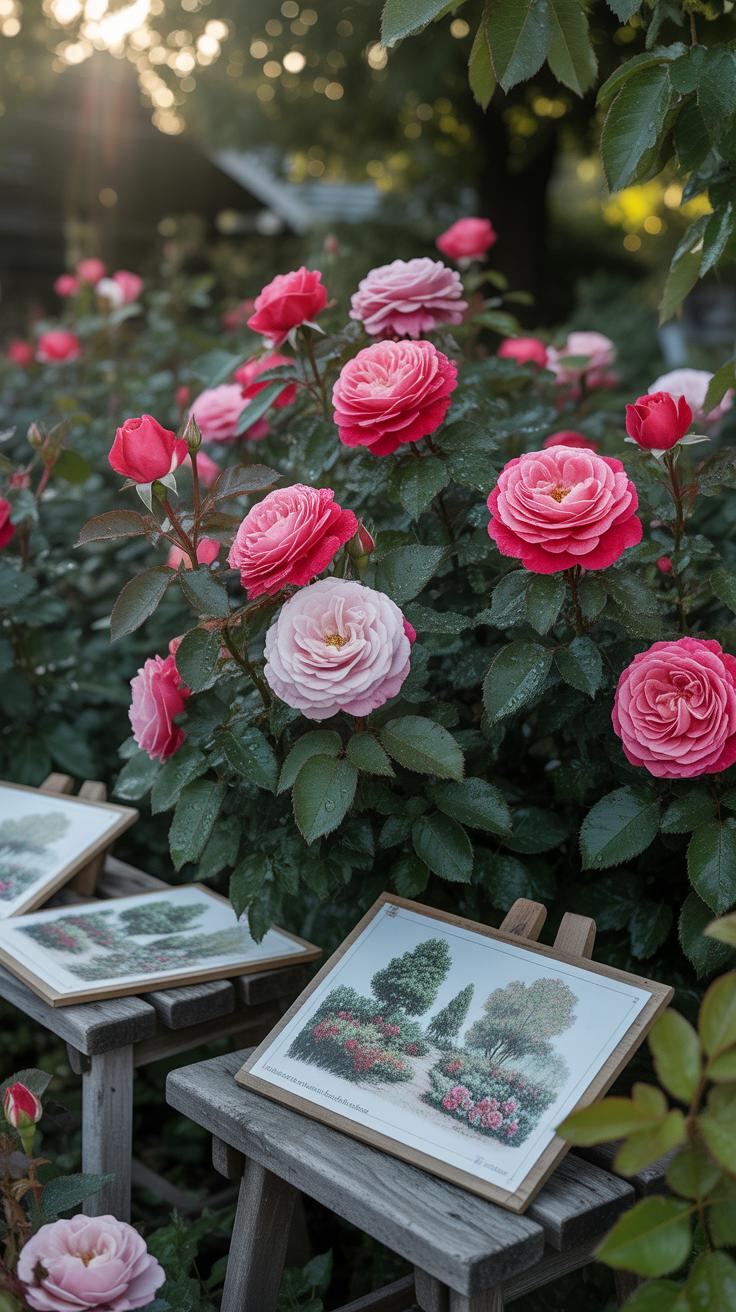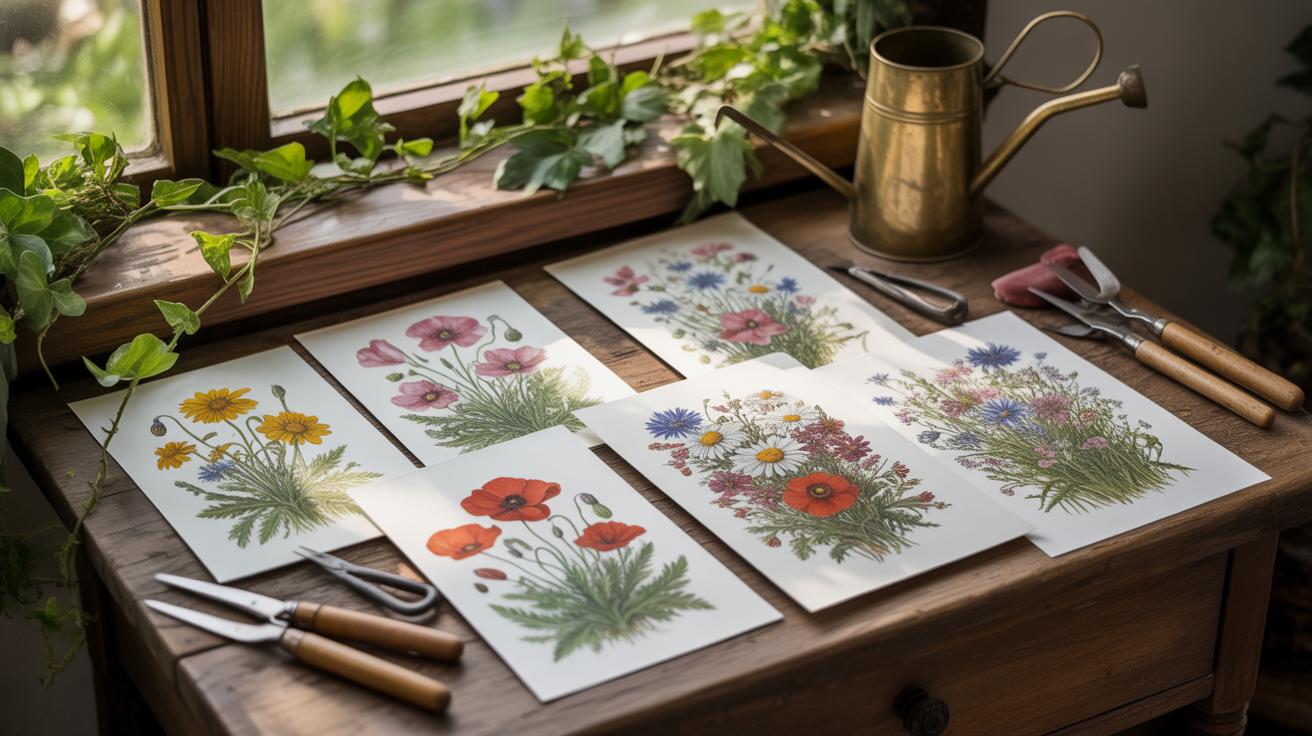
Creating Professional Garden Illustrations That Sell in 2024
Introduction
Creating Professional Garden Illustrations That Sell in 2024 requires understanding the techniques that attract buyers and the current market trends. Garden illustrations combine art with nature, offering visual enjoyment and inspiring garden ideas. This article covers the essential methods for creating illustrations that meet those needs.
You will learn how to design compelling images that appeal to a broad audience. The text explores styles, tools, and marketing approaches that help your garden illustrations stand out and sell well. Each chapter focuses on practical steps to improve your skills and profitability.
Effective Garden Illustration Strategies
What Defines a Garden Illustration
A garden illustration is more than just a drawing of plants and flowers. It’s a visual representation of garden ideas, styles, and details—often created to communicate design concepts or to capture the beauty of nature in a clear, engaging way. Typically, these illustrations show plants, paths, furniture, and sometimes insects or wildlife, all arranged to give a sense of a real or imagined outdoor space.
Its main features usually include accuracy in plant shapes and textures, harmonious composition, and a focus on how different elements fit together. The purpose can shift—sometimes it’s about helping gardeners plan, other times it’s meant to inspire or decorate. Often, it acts as a bridge between creative vision and practical application, offering clarity where words might fall short.
Types of Garden Illustrations
Garden illustrations come in quite a few styles. Some are highly detailed botanical drawings—these focus on the precise form of leaves, flowers, and stems, often used in horticultural books or seed catalogs. Others use a looser, more artistic approach, with watercolor washes or sketchy lines, perfect for magazines or garden-themed products.
You’ll also find technical landscape plans, where the emphasis lies on layout, scale, and how elements will coexist. These often look more geometric and less “pretty” but serve a clear functional purpose for designers and landscapers. Then there are whimsical or stylized illustrations, embracing color and exaggerated shapes to evoke mood rather than accuracy. The style you choose depends on your audience and the message you want to convey—do you want to inform, attract, or simply charm?
Common Garden Illustration Uses
You’ll see garden illustrations everywhere, but frequently in publishing, marketing, and design sectors.
- In publishing, they appear in gardening manuals, plant encyclopedias, and children’s books. They help readers visualize plant features or garden ideas without relying solely on photos.
- Marketing uses garden illustrations to promote products like seeds, tools, or outdoor furniture. A well-crafted illustration can lend a brand personality—sometimes calm and classic, other times fresh and modern.
- Design applications include planning aids for landscape architects or garden centers, showing potential layouts and planting schemes in a clear, digestible way.
Sometimes, these illustrations span all three arenas, creating a crossover that enriches each field. It’s fascinating how a single piece can serve practical, aesthetic, and commercial needs—all depending on how it’s crafted and where it’s placed. Have you noticed how certain garden illustrations stick in your mind while others fade quickly? That might be the secret behind selling illustrations: impact and relevance combined.
Why Garden Illustrations Matter to Buyers
Buyers look for garden illustrations because they offer something pictures just can’t fully capture—a sense of possibility. You might think it’s just about pretty pictures, but often, it’s more about a spark of inspiration. When people see these illustrations, their minds start wandering to what their own garden could become.
The value lies in how these images translate garden concepts into something approachable. They’re not just decorative; they’re guides that help buyers imagine, plan, and even feel confident about trying new ideas.
There’s also a strong emotional pull. Many buyers connect with garden illustrations as a way to bring calm or joy into their lives. It’s fascinating how a simple drawing can invite feelings of peace or excitement—sometimes both at once.
The practical side is maybe overlooked too often. People don’t just buy for beauty; they want to see possibilities laid out clearly. A well-crafted illustration helps with:
- Choosing plants that fit their style and climate
- Visualizing layout and flow before any digging starts
- Finding decor ideas that match their personal tastes
Sometimes, I wonder if the real reason buyers are drawn in is because these illustrations lower the barriers of uncertainty. They make the dream a bit more real, a bit less overwhelming.
How to Start Your Garden Illustration Project
Starting a garden illustration project might feel a bit overwhelming at first. But breaking it down into clear steps can make the process much easier, and even more enjoyable.
First, decide the purpose of your illustration. Are you aiming to create something realistic and detailed for a client, or a more stylized piece for personal work? Knowing this upfront shapes your entire approach.
Next, gather your materials. This includes sketchbooks, pencils, pens, digital devices—whatever you prefer. Organize them so you can access tools quickly and stay focused.
Then, set aside some time for your first ideas. Don’t rush sketches or concepts; it’s fine if they’re rough or unfinished. This is the stage to explore and experiment freely.
Finally, create a rough timeline or checklist for the project’s phases: research, sketching, coloring, refining, and final touches. Having a loose plan helps you track progress without feeling boxed in.
By outlining these steps clearly at the start, you prepare yourself to work methodically, but with room to react to new ideas as they come.
Gathering Garden Inspiration and References
Finding inspiration for garden illustrations isn’t always about going out and taking photos. Sometimes just looking at old botanical prints, books, or even seed catalogs can spark ideas unexpectedly.
Online sources are helpful too—websites, social media, and digital archives offer vast collections of garden imagery. Still, be cautious; not every photo makes a great reference. Pay attention to lighting, detail, and composition.
Nature itself is a prime source. Even a brief walk outside can reveal interesting plant shapes, colors, or textures. Try to observe small details—leaf veins, petal folds—that might add authenticity or charm to your drawing.
Keep a dedicated folder, either digital or physical, to collect these references. Over time, you’ll build a resource that not only informs but inspires your unique style.
Sketching and Planning Your Illustration
When moving from ideas to sketches, it helps to start loose and fast. Don’t worry about precision; focus on capturing the main forms and overall composition first.
Think about the balance between elements—where to put flowers, bushes, pathways so the piece feels natural yet interesting. You might try several different layouts before settling on one.
Details come later. Early sketches should show the relationship between objects, scale, and perspective. If something feels off, adjust it now instead of after investing too much time.
Deciding on your color scheme can also influence the sketch. Sometimes using colored pencils or digital layers to test palettes helps clarify mood and focus.
Sketching isn’t just a task; it’s a conversation with your future artwork. Listen carefully to what the rough lines are telling you, and don’t be afraid to revise again and again.
Best Tools for Garden Illustration
Traditional Tools Choices
Working with traditional media still holds a strong appeal for many garden illustrators. Pencil and ink are the classics, offering control and fine detail that are hard to replicate digitally. I find that a mechanical pencil, perhaps with a range of hardnesses from 2H to 4B, can give the subtle textures garden subjects demand—leaves, bark, petals.
Watercolors remain a favorite, especially for their transparency. They capture the lightness of foliage and flowers, but they’re tricky. Timing and layering matter a lot, and if you’re not careful, colors can muddy. Some artists prefer gouache for a more opaque finish when vibrant garden scenes need an extra punch.
Don’t overlook markers or colored pencils. They can provide quick, rich colors without the fuss of drying times. I’ve seen illustrators use a mix—pen outlines with colored pencil fills, creating a nice contrast in textures.
Digital Tools and Software
Digital illustration has come a long way and offers flexibility you won’t get with traditional tools. Procreate on the iPad remains wildly popular for garden illustration. It’s intuitive, and the brush library is extensive—you can paint delicate leaves or rough tree bark with custom brushes that mimic real media.
Photoshop still leads in versatility, though it’s a bit overwhelming at first. Layers, masks, and blending modes allow for nuanced edits and corrections. If you’re working on client projects, the ability to tweak colors and compositions quickly is a real asset.
For vector work, Adobe Illustrator is handy, especially if your garden illustrations need to be scaled for prints or signage without losing detail. Pairing a Wacom tablet with any of these programs can improve precision, though some artists swear by the simplicity of a good stylus and tablet combo.
Choosing tools really comes down to what fits your workflow and the style you want. Do you want to replicate natural textures or go for cleaner, more graphic images? Your tools should serve those goals, not the other way around.
Checklist for a Selling Garden Illustration
When you think your garden illustration is done, pause. There’s more to check before it feels truly ready to sell. A clear checklist can save you from last-minute doubts and catch details you might miss when you’re too close to your own work.
Visual Quality Checks
First, look closely at your colors. Are they consistent? Do they bring out the mood of the garden you want to show? Too bright or dull can make or break the viewer’s interest. Next, check details—too little and the image feels flat; too much and it gets cluttered. Think about your style too. Does it suit the kind of garden you’re illustrating? For example, delicate line work might work better for a botanical sketch, whereas bolder strokes fit a more impressionistic scene.
- Check color harmony and saturation levels.
- Review the balance between fine details and simplicity.
- Ensure style consistency throughout the image.
- Look for any distracting elements or awkward compositions.
Market and Audience Alignment
Knowing your potential buyers is tricky but necessary. Are they garden enthusiasts buying prints? Or are they publishers needing illustrations for a magazine? Each group has different tastes. Maybe current trends favor minimalism, but your illustration is highly ornate. That could mean reworking parts or targeting a niche market. Keep an eye on popular garden styles, plant types, and even color schemes that sell now—sometimes what you love isn’t what sells best.
- Identify your target audience clearly.
- Research recent successful garden illustrations in your niche.
- Adjust your work to fit buyer preferences without losing authenticity.
- Ask yourself if your illustration answers current market demand or sets a new trend.
Making this checklist part of your routine could be the difference between an illustration that gathers dust and one that actually sells. You might even catch yourself reconsidering small details that turn out to be surprisingly important. It’s those subtle shifts that sometimes make all the difference.
Garden Illustration Sales Channels Comparison
Online Marketplaces Versus Direct Sales
Selling garden illustrations online can open up a wide audience quickly. Platforms like Etsy, Society6, and Redbubble host many artists and provide easy access to customers looking for garden-themed art. The upside? You get visibility without much upfront work and the platform handles payment processing, which saves time.
But there’s a trade-off. These sites take a cut from your sales, and you might find your work competing with hundreds of similar pieces. Standing out can be tricky, and sometimes the community favors lower prices, which might eat into your profits.
Direct sales, on the other hand, can build stronger client connections. Selling through your website, social media, or local events allows you to set your own prices and maintain control. But it needs more effort—building trust, promoting consistently, and handling logistics yourself.
So, should you stick to the convenience of online marketplaces or invest time in direct sales? Maybe you want a bit of both. It’s a balance. I’ve noticed artists who combine them sometimes find the best results, but honestly, it depends on your style and patience.
Print and Product Licensing Options
Another channel worth exploring is prints and product licensing. Selling prints of your garden illustrations is a common path—people love having art they can frame. You can also license designs for merchandise like tote bags, mugs, or even fabric patterns. Licensing means others pay you to use your art while you keep the copyright.
Print sales are straightforward but can require managing inventory or working with print-on-demand services. Licensing, meanwhile, offers passive income but involves contracts and often less control over how your art is used. Some artists find licensing confusing or intimidating at first. But it can unlock new revenue streams, especially if your style fits home décor or garden lifestyle brands.
Thinking about these options, it helps to ask—what fits your work’s style and your willingness to juggle marketing, production, or legal details? There isn’t one right answer, just what clicks with your practice.
Avoiding Common Garden Illustration Pitfalls
Overcomplicating the Design
Sometimes less really is more. When garden illustrations get too busy, the main message can get lost. Cluttered designs confuse buyers instead of drawing them in. You want your work to feel approachable, not overwhelming.
So how do you keep things clear? Start by focusing on a few key elements in each piece. Don’t try to include every plant or detail you know. Instead, think about what matters most for the story or mood you want to share.
Use space cleverly. Empty areas give the eyes room to rest and highlight what’s important. Colors and lines should guide, not shout. If you find yourself adding just one more flower or leaf, pause and ask if it really improves the design or just fills space.
Ignoring Buyer Feedback
You might feel confident in your style, but skipping feedback can be a missed opportunity. Buyers often reveal what’s working and what’s not. Their reactions can point you toward improvements you might overlook on your own.
Not every comment needs a change, of course, but patterns in feedback are hard to ignore.
- Are several buyers asking for simpler layouts?
- Is there confusion about certain plant types or colors?
- Do they want more seasonal variety or specific garden styles?
Use this information wisely. Maybe experiment with small adjustments. Sometimes, just tweaking how you show light or scale can make a big difference. And when you do respond to feedback, mention it politely. That builds trust and shows you care about delivering exactly what they want.
Examples of Successful Garden Illustrations
One garden illustration that sold remarkably well was a watercolor piece featuring a winding path through a tulip garden. What stood out wasn’t just the colors but how the artist laid out the elements. The composition drew the eye naturally—starting from the lower corner and guiding the viewer deeper into the scene. It wasn’t overly busy, yet it contained enough detail to make you linger.
A digital piece got traction too. It showed a minimal, almost architectural view of a formal garden. Sharp lines met soft foliage, creating a tension that felt fresh, even a bit unexpected. People responded well to that contrast, maybe because it felt less traditional but still inviting.
Another example came from botanical sketches with fine ink lines, paired with subtle washes of pastel tones. The style had a timeless feel, which some buyers seemed to appreciate—perhaps because it fit well in a variety of settings, from modern homes to cozy cafes.
Clear Composition Example
Consider an illustration where the layout guides you effortlessly—from a foreground filled with flowering plants to a distant garden bench framed by trees. The artist didn’t cram everything in but left breathing room, creating a clear focal point. This made the piece striking without overwhelming the viewer. You can almost imagine stepping into that scene.
What makes this composition effective? The balance between detail and openness. It’s almost like—a visual pause that complements the busier areas. That contrast in itself becomes part of the image’s impact. I’ve noticed this tactic often makes illustrations more appealing for buyers looking to enhance a calm, inviting space.
Style That Captured Buyers
A style gaining interest right now blends loose brushwork with precise detail. At first glance, the strokes feel spontaneous and airy. But look closer: leaves and petals are detailed, almost scientific. This combination speaks to both emotion and accuracy. Buyers seem drawn to this because it offers nature’s beauty with an artistic edge.
There’s something about that style that feels authentic yet polished. It’s less about perfection and more about capturing a moment—like a garden snapshot that’s part memory, part imagination. Whether it’s a print or a digital download, this approach has sold steadily with minimal effort.
Conclusions
Producing garden illustrations involves applying artistic skills with knowledge of buyer preferences. By focusing on key visual elements and optimizing your style, you can increase your chances of selling successfully. Using the right tools and understanding market demands play a vital role in your success.
Keep practicing and updating your techniques based on feedback and trends. With persistence and attention to detail, your garden illustrations can attract buyers and grow into a profitable creative venture in 2024.

